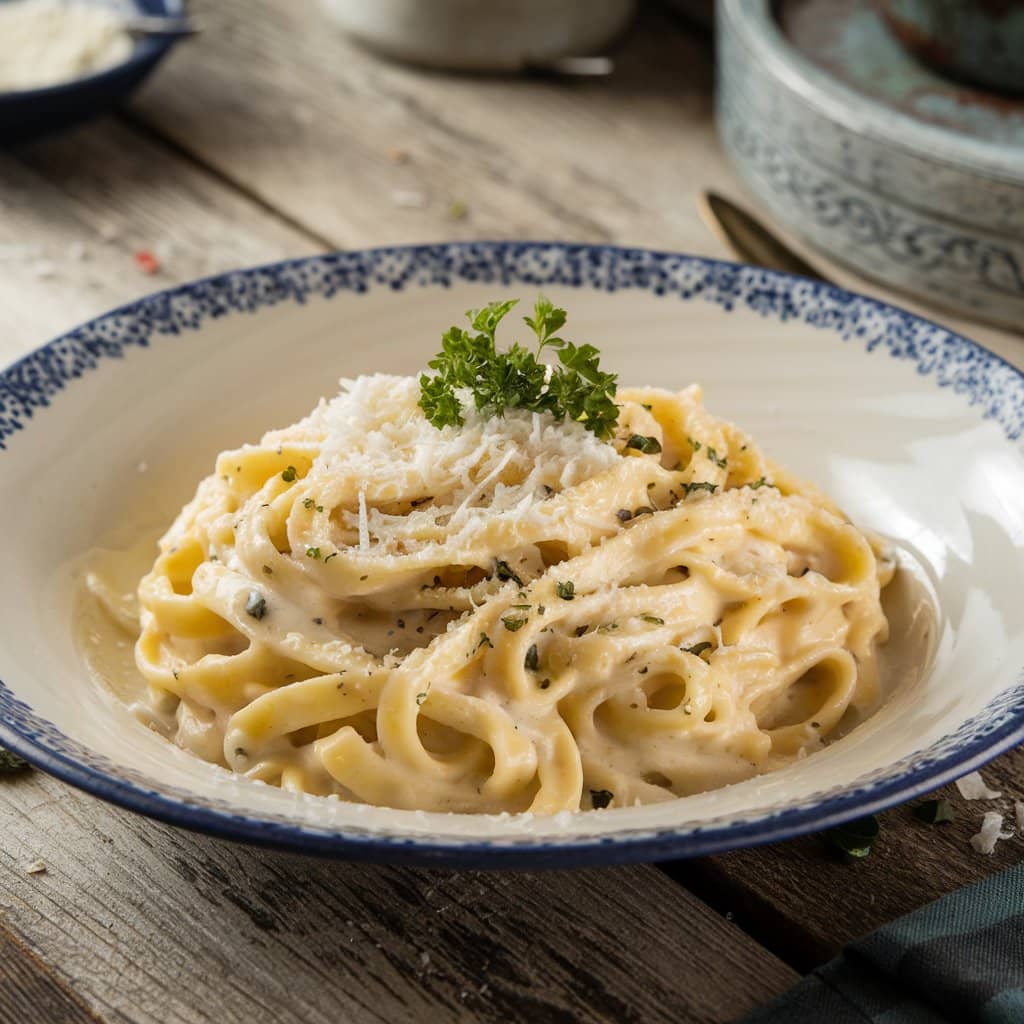Alfredo pasta is one of the most beloved Italian dishes worldwide, offering a rich, creamy experience with its luxurious sauce made of butter, cream, and Parmesan cheese. While the sauce itself is the star, choosing the right pasta type can make or break your Alfredo experience. This article will explore which pastas work best with Alfredo sauce, why pasta selection matters, and how to create the perfect plate of creamy goodness.
Table of contents
Why Choosing the Right Pasta Matters
When making a delicious Alfredo dish, choosing the right pasta can make a big difference. So, what type of pasta is best for Alfredo? Traditional Italian chefs recommend using fettuccine because of its wide, flat shape that holds the creamy sauce perfectly. However, there are other pasta types worth considering for Alfredo recipes.
What Type of Pasta Is Best for Alfredo?
Not all pasta is created equal when it comes to Alfredo sauce. Some pastas complement the creamy texture of the sauce better than others due to their shape, size, and surface texture. Here are the best types of pasta for Alfredo:
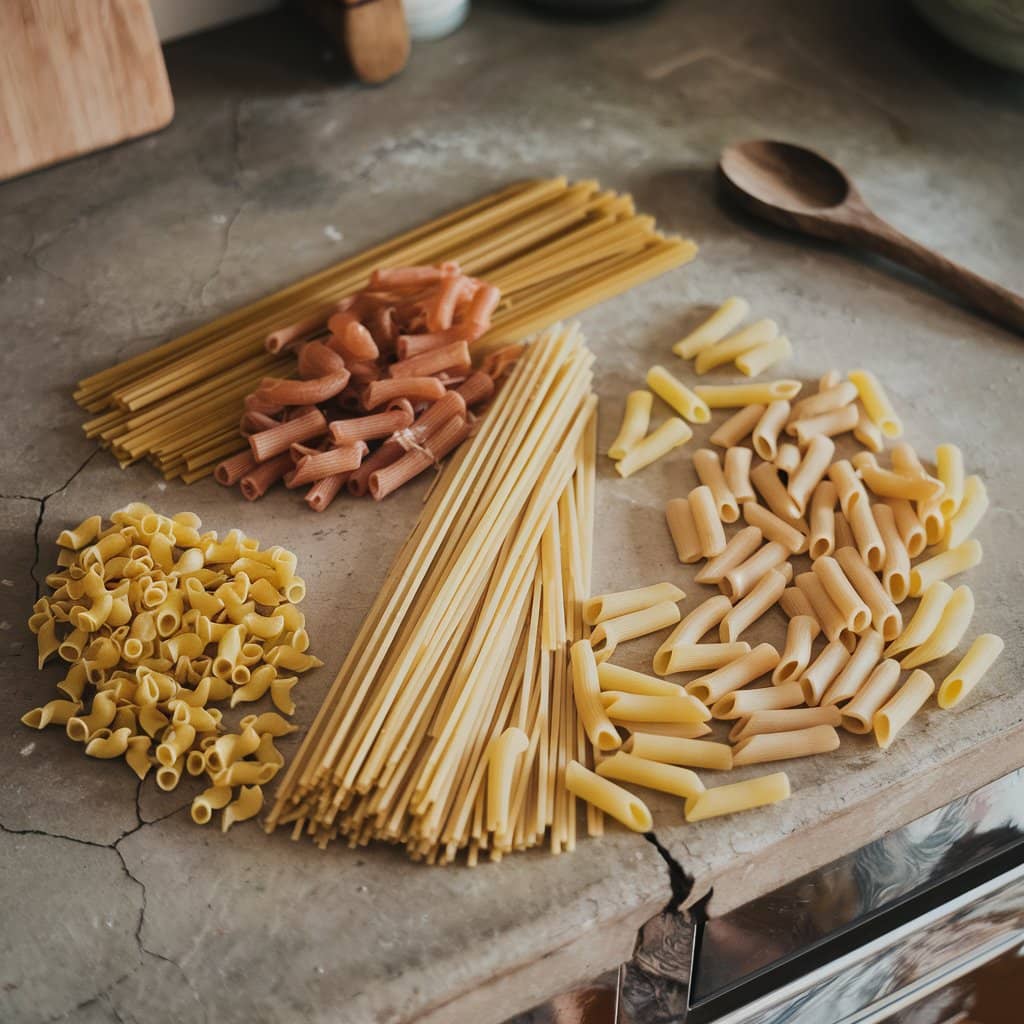
Traditional Pasta Choices
- Fettuccine
If you’re wondering what type of pasta is best for Alfredo, fettuccine is the classic choice. Its flat surface clings to the sauce, ensuring a perfect bite every time. - Linguine
Another great answer to what type of pasta is best for Alfredo is linguine. It’s slightly thinner than fettuccine but still holds creamy sauces well. - Tagliatelle
If you’re still asking what type of pasta is best for Alfredo, consider tagliatelle. Its thicker ribbons create a more filling and satisfying dish.
Alternative Pasta Options
- Penne
Though unconventional, penne can still be considered when deciding what type of pasta is best for Alfredo. Its tube-like shape captures sauce inside for flavorful bites. - Pappardelle
Some pasta lovers think pappardelle might be the best pasta for Alfredo due to its wide, hearty ribbons that hold even more sauce. - Bucatini
Bucatini is like spaghetti but with a hollow center. This design allows Alfredo sauce to flow through the pasta, delivering bursts of flavor inside and out.
Specialty and Gluten-Free Options
- Zoodles (Zucchini Noodles)
For a low-carb, gluten-free alternative, zoodles are an excellent choice. Their light texture balances the richness of Alfredo sauce, making the dish feel less heavy. - Gluten-Free Fettuccine
Gluten-free pasta options made from rice, corn, or quinoa can replicate the experience of traditional fettuccine while catering to dietary restrictions. Look for brands specifically designed to mimic the texture of regular pasta.
Factors to Consider When Choosing Pasta for Alfredo
Selecting the best pasta for Alfredo sauce involves more than just tradition. Several factors affect how well pasta pairs with this creamy sauce, including its texture, shape, and cooking time. Understanding these elements will help you choose the perfect pasta every time.
Sauce Clinginess
The most critical factor when choosing pasta for Alfredo is how well the sauce clings to the pasta. Here’s why this matters:
- Surface Texture: Pasta with a rough or ridged surface, such as penne or rigatoni, holds onto sauce better, ensuring that each bite is flavorful.
- Shape Matters: Flat, wide pasta like fettuccine or pappardelle offers maximum surface area, allowing more sauce to adhere.
Thickness and Shape
The thickness and shape of the pasta can significantly impact how well the sauce is absorbed:
- Thicker Pasta: Thick pasta like tagliatelle or pappardelle can handle heavier Alfredo sauces, making each bite hearty and satisfying.
- Long vs. Short: Long pasta, like fettuccine, offers a more elegant presentation, while shorter pastas like penne provide easy-to-eat bites.
Cooking Time
Cooking pasta to the correct texture is essential:
- Al Dente: Cook pasta until it is al dente (firm to the bite). Overcooked pasta becomes mushy and fails to hold the sauce properly.
- Fresh vs. Dried: Fresh pasta cooks faster and tends to be softer, creating a luxurious Alfredo experience. Dried pasta is more convenient and has a firmer texture when cooked properly.
Quality of Ingredients
The quality of your pasta plays a crucial role in creating a top-tier Alfredo dish:
- Artisan Pasta: Higher-quality pasta made with durum wheat or semolina has a firmer texture, making it ideal for creamy sauces like Alfredo.
- Homemade Pasta: Making your own pasta ensures freshness and allows you to customize thickness and shape for the perfect pairing.
Popular Alfredo Pasta Dishes
Alfredo sauce is versatile and pairs well with various ingredients, making it the foundation of many delicious pasta dishes. Here are some of the most popular Alfredo pasta recipes that elevate this creamy classic:
Classic Fettuccine Alfredo
The iconic Fettuccine Alfredo is a timeless dish loved worldwide. It features perfectly cooked fettuccine tossed in a luscious sauce made of butter, heavy cream, and freshly grated Parmesan cheese. A sprinkle of parsley adds freshness and color.
Pro Tip: Use freshly grated Parmesan for better melting and richer flavor.
Chicken Alfredo
Chicken Alfredo is a hearty and satisfying dish that combines tender, seasoned chicken breast with creamy Alfredo sauce and pasta. The added protein makes it a well-rounded meal perfect for lunch or dinner.
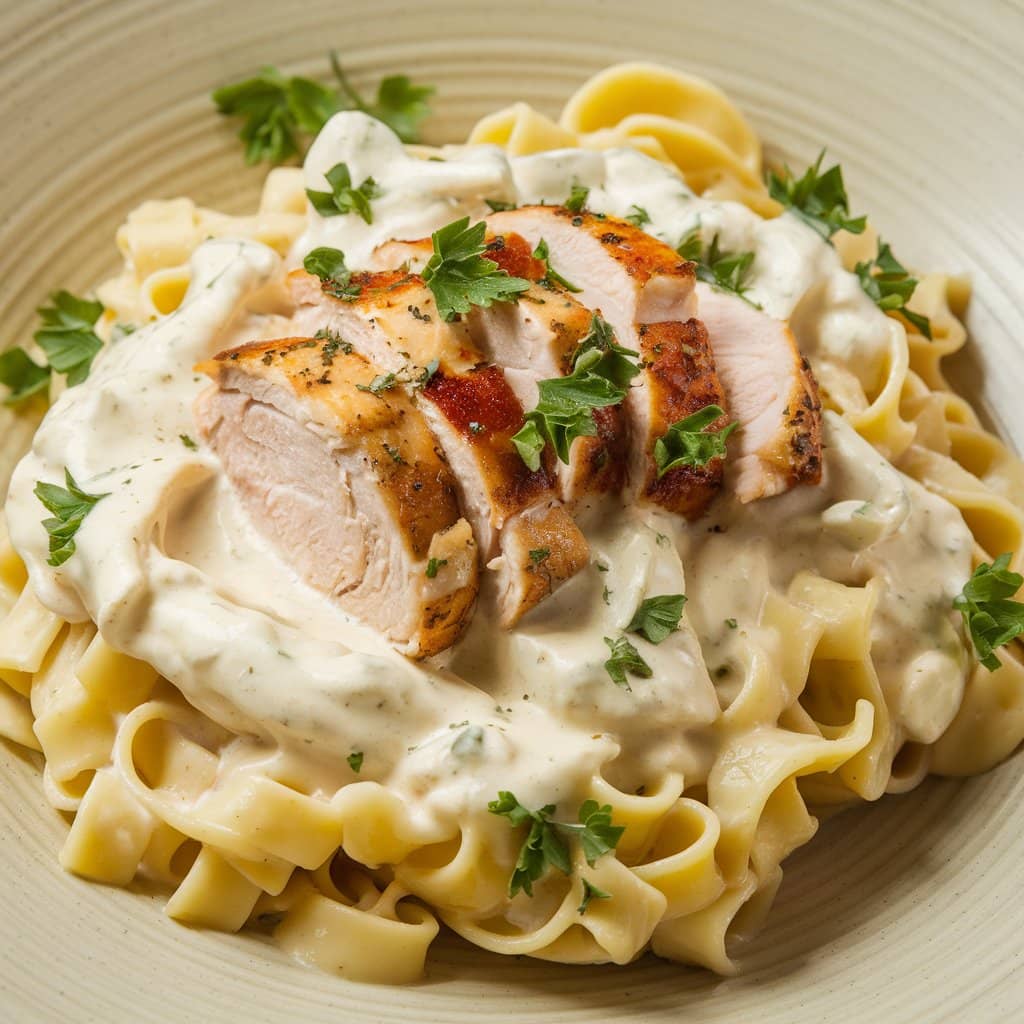
Cooking Tip: Sear the chicken until golden brown for maximum flavor, and let it rest before slicing to keep it juicy.
Shrimp Alfredo
Shrimp Alfredo is a seafood lover’s dream. The combination of succulent shrimp with rich Alfredo sauce creates a luxurious dish bursting with flavor. Fresh herbs like basil or parsley enhance its freshness.
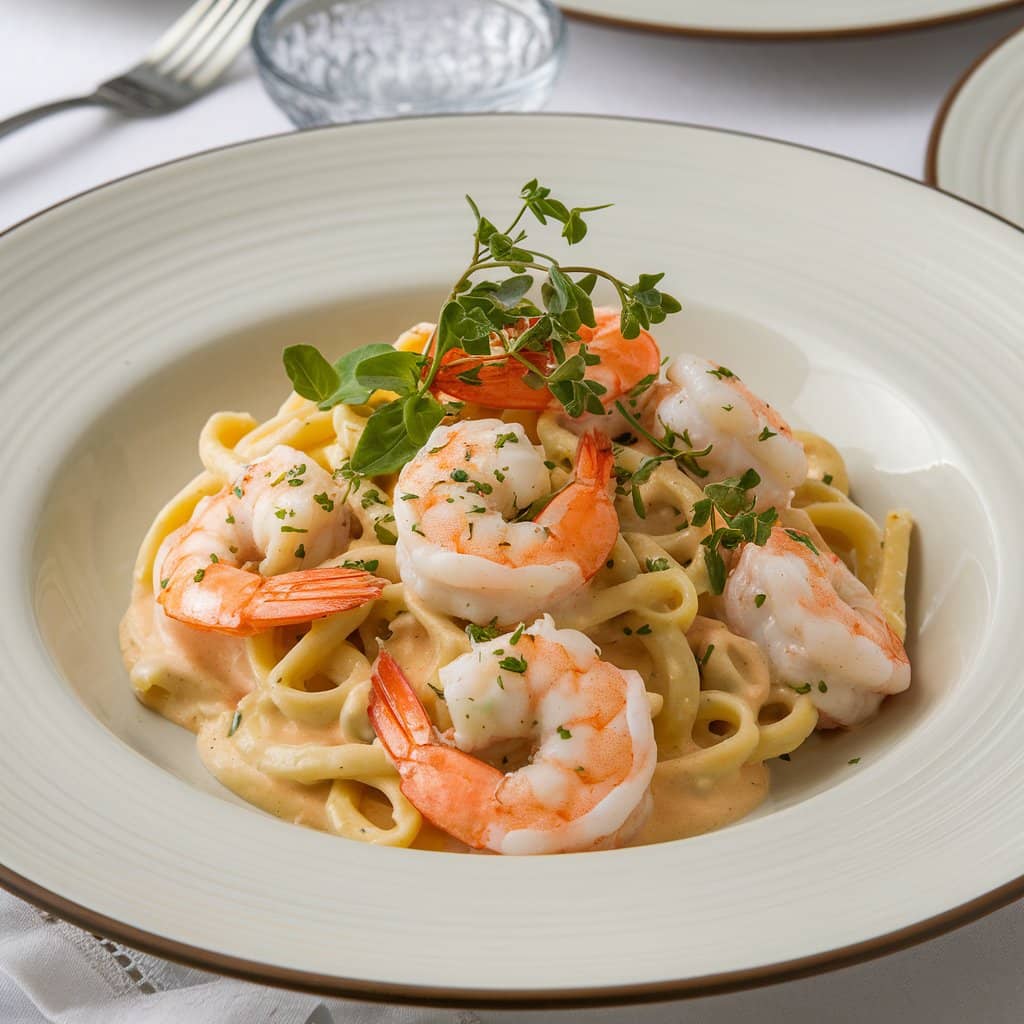
Seafood Tip: Use large shrimp and avoid overcooking to keep them tender and juicy.
Vegetarian Alfredo
For a meat-free option, Vegetarian Alfredo is loaded with sautéed vegetables like mushrooms, spinach, and cherry tomatoes. These ingredients add color, texture, and nutrition while keeping the dish light and flavorful.
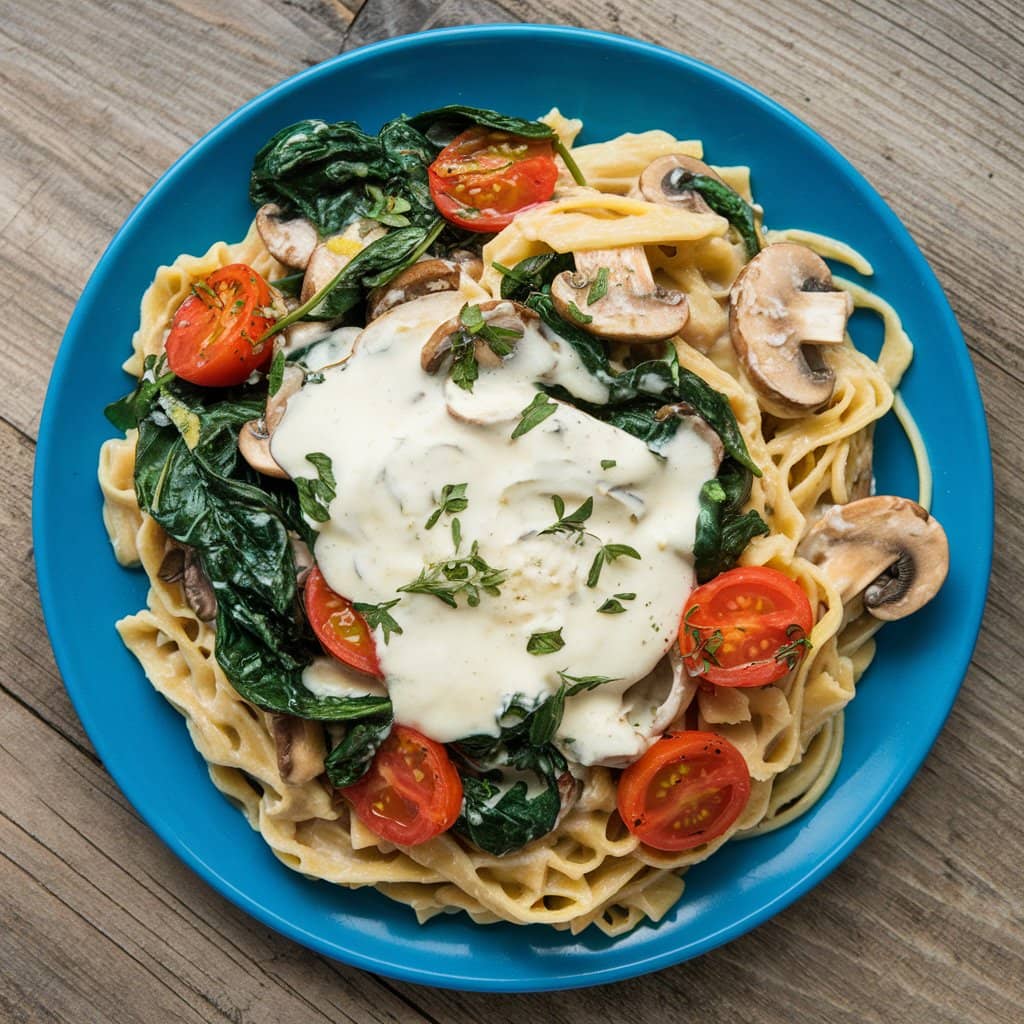
Healthy Swap: Use whole wheat pasta for added fiber or substitute cream with a plant-based alternative for a lighter version.
Alfredo with Bacon (Carbonara Twist)
Combining crispy bacon or pancetta with Alfredo sauce creates a rich, smoky twist similar to Carbonara. This dish is perfect for those who crave extra depth of flavor.
Bacon Tip: Cook the bacon until crispy and add it at the last minute to maintain its crunch.
Spinach and Artichoke Alfredo
Inspired by the classic spinach and artichoke dip, this Alfredo variation includes sautéed spinach, marinated artichokes, and creamy sauce. It’s a unique way to enjoy a vegetable-forward pasta dish with indulgent flavors.
Serving Suggestion: Top with toasted breadcrumbs for added crunch and texture.
Tips for Making the Perfect Alfredo Pasta at Home
Creating restaurant-quality Alfredo pasta at home is easier than you might think. With the right techniques, ingredients, and a bit of patience, you can make a rich, creamy Alfredo dish that rivals any Italian eatery. Here are expert tips to help you perfect your next Alfredo pasta meal:
Use Fresh Ingredients
- Fresh Parmesan Cheese:
- Always use freshly grated Parmesan cheese instead of pre-shredded versions. Pre-grated cheese contains anti-caking agents that prevent smooth melting.
- High-Quality Butter and Cream:
- Use unsalted butter and heavy cream for a luxurious, velvety sauce. Avoid low-fat substitutes, as they won’t create the same creamy texture.
- Fresh Garlic:
- Fresh garlic adds depth to Alfredo sauce. Sauté minced garlic in butter before adding cream for a robust, savory base.
Proper Pasta Cooking Technique
- Salt the Water Generously:
- Add plenty of salt to boiling water before cooking pasta. This enhances the flavor of the pasta and balances the sauce.
- Cook Pasta to Al Dente:
- Follow the cooking time on the pasta package but taste-test it for firmness. Overcooked pasta becomes mushy when mixed with sauce.
- Save Some Pasta Water:
- Reserve a cup of pasta water before draining. Adding it to the Alfredo sauce can help thin the sauce and improve its consistency.
Mastering the Alfredo Sauce
- Low and Slow Heat:
- Cook the sauce on low heat to prevent it from curdling. Avoid boiling the cream, as it can separate and create a grainy texture.
- Add Cheese Gradually:
- Turn off the heat and slowly stir in grated Parmesan cheese. Adding it too quickly or over high heat can cause clumping.
- Balance the Flavors:
- Taste the sauce frequently and adjust with salt, black pepper, and a pinch of nutmeg for added warmth and complexity.
Combining Pasta and Sauce
- Mix Immediately:
- Add the hot pasta directly into the Alfredo sauce while it’s still on low heat. This helps the sauce cling to the pasta evenly.
- Toss with Confidence:
- Use tongs or a pasta spoon to toss the pasta until every strand is coated. Work quickly to prevent the sauce from thickening too much.
- Add Fresh Herbs and Toppings:
- Finish with freshly chopped parsley or basil for a burst of freshness. Add a sprinkle of extra Parmesan and freshly ground black pepper before serving.
Serving and Storing Alfredo Pasta
- Serve Immediately:
- Alfredo pasta is best served hot and fresh. The sauce tends to thicken as it cools, so serve it right after cooking.
- Reheating Tips:
- To reheat Alfredo pasta, add a splash of milk or cream and warm it gently over low heat, stirring constantly to maintain a smooth consistency.
- Freezing Alfredo Sauce:
- If you have leftover sauce, store it separately from the pasta. Freeze the sauce in an airtight container for up to two months.
FAQs About the Best Pasta for Alfredo
Here are some frequently asked questions about choosing the right pasta for Alfredo and how to create the perfect dish.
What Makes Fettuccine Ideal for Alfredo?
Fettuccine is ideal because of its wide, flat shape, which holds Alfredo sauce evenly across its surface. The thickness prevents the pasta from getting overwhelmed by the heavy sauce, ensuring a creamy and satisfying bite every time.
Can Spaghetti Be Used for Alfredo?
Yes, spaghetti can be used, though it’s not the traditional choice. Since spaghetti is thin and round, it doesn’t hold Alfredo sauce as well as fettuccine or linguine. If spaghetti is your only option, consider adding extra cheese or sauce to ensure full coverage.
Is Whole Wheat Pasta Good for Alfredo?
Whole wheat pasta can work with Alfredo if you want a healthier option. Its nutty flavor contrasts with the creamy sauce, creating a more complex taste. Be sure to cook whole wheat pasta slightly longer to avoid an overly firm texture.
How Do I Prevent Pasta from Sticking Together?
To prevent pasta from sticking:
- Use Plenty of Water: Boil pasta in a large pot with ample water.
- Stir Frequently: Stir the pasta during the first two minutes of cooking.
- Add Oil Sparingly: Use a splash of olive oil only if you plan to store the pasta separately from the sauce.
- Rinse Carefully: If storing pasta, rinse with cold water to remove excess starch.
Can I Use Gluten-Free Pasta for Alfredo?
Yes, gluten-free pasta is a great alternative. Look for varieties made from rice, corn, or quinoa for a similar texture to traditional pasta. Be mindful of cooking times, as gluten-free pasta can become mushy if overcooked.
What Is the Best Cheese for Alfredo Sauce?
The best cheese for Alfredo is freshly grated Parmesan. It melts smoothly into the sauce, creating a creamy consistency. You can also use Pecorino Romano for a sharper, saltier flavor or a blend of both cheeses for extra richness.
Conclusion
Choosing the best pasta for Alfredo is key to creating a rich and satisfying dish. Traditional options like fettuccine, linguine, and tagliatelle are classic choices that allow the creamy sauce to coat every bite. Alternative pastas like penne, pappardelle, and even gluten-free varieties can add unique textures and flavors.
Consider factors such as pasta shape, thickness, and cooking time when making your selection. Whether you’re making a classic Fettuccine Alfredo, a protein-packed Chicken Alfredo, or a lighter Vegetarian Alfredo, selecting the right pasta ensures a delicious and well-balanced meal.
With these tips, you can create a perfect Alfredo pasta dish every time—whether you stick with tradition or experiment with new pasta types. Enjoy the ultimate comfort food experience!

